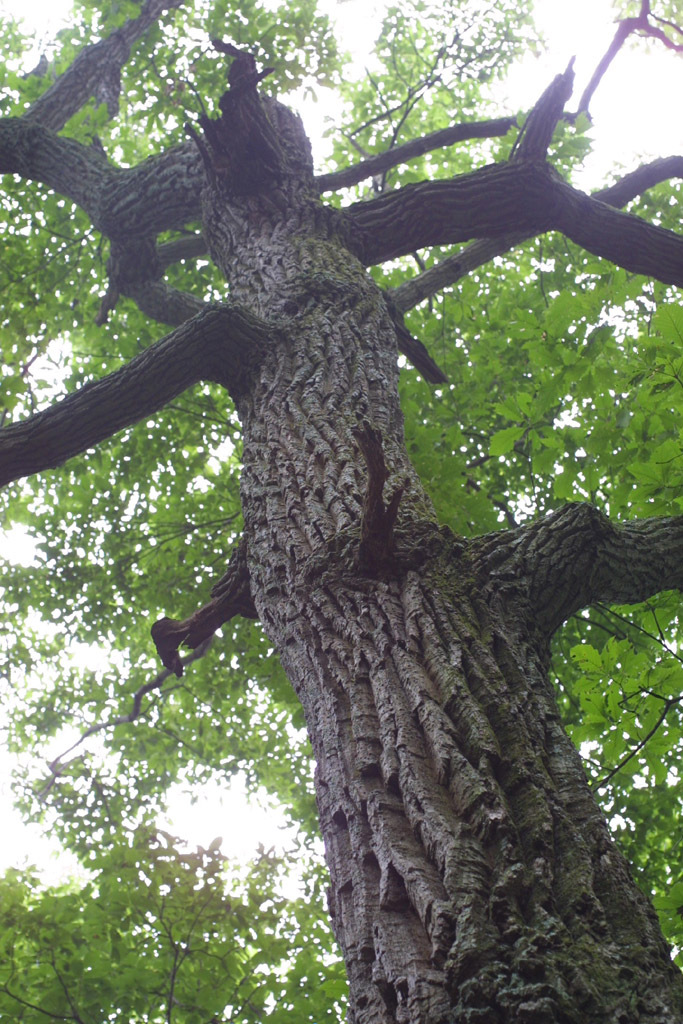Chestnut Oak : Overview

A marvelous specimen of the Quercus Prinus family, located at Percy Warner park on the outskirts of Nashville (Steven J. Baskauf, July 2002)
Chestnut Oak
Introduction
There are few trees in the world that match the nobility and grandeur of the oak, whose size and stature conveys a sense of stability of no smaller magnitude than any other of the great beasts of the world. A great oak tree was a place where people would gather together to celebrate, hold meetings, or seek refuge; a prominent example of this being the major oak of Sherwood Forest, known in English folklore as the tree that sheltered Robin Hood and his Merry Men; additional discourse on this tree can be found in the English Oak profile.
Another famous oak was known as Gernikako Arbola, a symbol of local democracy in the town of Guernica since the middle ages, under whose branches laws were written to form a democratically run governance of the region. During the Spanish Civil War, Nazi Luftwaffe planes bombed Guernica for nearly four hours, devastating the town and killing an estimated 1,654 civilians, yet when the smoke cleared, the oak was left still standing, strong as ever.
Oaks have played an important role in people’s lives for a very long time, their place in our history characterized by their image as an immovable center of life as well as the fundamental resources they provide. There are somewhere around 600 species of oaks in the world, several of which can be found right here on the UVM campus. One such species that is native to North America is the Chestnut Oak, an Oak famed for its illustrious bark and prodigious acorns, helping to distinguish it as among the most impressive varieties of one of the most dignified families on earth.
